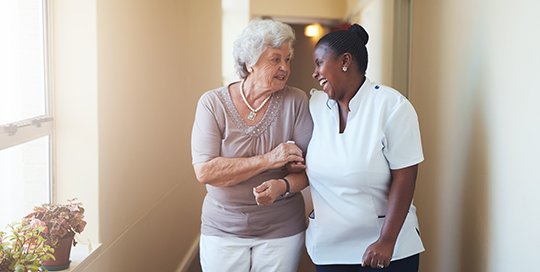Personal Care Assistance
What are the Activities of Daily Living (ADLs)?
The Activities of Daily Living are a series of basic activities necessary for independent living at home or in the community. They are performed on a daily basis. There are many variations on the definition of the ADLs, but most organizations agree there are 5 basic categories.
1. Personal hygiene – bathing/showering, grooming, nail care, and oral care.
2. Dressing - being able to make appropriate clothing decisions and physically dress and undress oneself.
3. Eating - the ability to feed oneself, though not necessarily the capability to prepare food.
4. Maintaining continence - being able to mentally and physically use a restroom. This includes the ability to get on and off the toilet and cleaning oneself.
5. Transferring/Mobility- being able to stand from a sitting position, as well as get in and out of bed. The ability to walk independently from one location to another.
The level of independence is based on whether someone can perform these activities on their own or they need help from a family caregiver.
What are the Instrumental Activities of Daily Living (IADLs)?
Instrumental Activities of Daily Living are similar to ADLs. These actions are important to being able to live independently, but are not necessarily required on a daily basis. The Instrumental Activities are not as noticeable as the Activities of Daily Living when it comes to loss of functioning. But functional ability for IADLs is generally lost before ADLs. IADLs can help better determine the level of assistance needed by an elderly or disabled person. The IADLs include:
1. Basic communication skills - such as using a regular phone, mobile phone, email, or the internet.
2. Transportation - either by driving oneself, arranging rides, or the ability to use public transportation.
3. Meal preparation - meal planning, cooking, clean up, storage, and the ability to safely use kitchen equipment and utensils.
4. Shopping - the ability to make appropriate food and clothing purchase decisions.
5. Housework - doing laundry, washing dishes, dusting, vacuuming, and maintaining a clean place of residence.
6. Managing medications - taking the correct amount of medication at the correct time. Managing re-fills, and avoiding conflicts.
7. Managing personal finances - operating within a budget, writing checks, paying bills, and avoiding scams
Technologies That Help with Specific ADLs
For people who have difficulty completing their activities of daily living, there are technologies that can help. These technologies allow persons to complete their ADLs with more ease, as well as decrease the amount of time it takes to complete them. This assistance can allow them to maintain their independence. While adaptive equipment can be very simple, it is often the difference between living independently and requiring regular assistance.
Examples of assistive technology include:
shower chairs
handheld shower heads
grab bars in the bathroom
toilet seat risers
washcloth mitts
bed rails
prescription drug organizers
kitchen utensils with large handles
two handed cups
stocking aids
tennis shoes with velcro rather than shoelaces
walkers
wheelchairs


